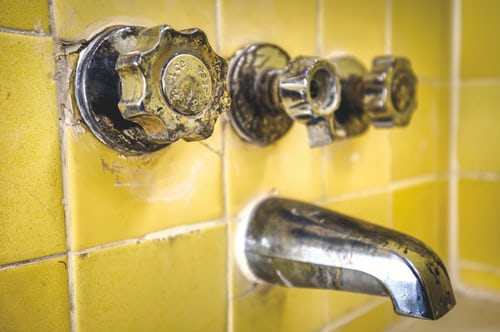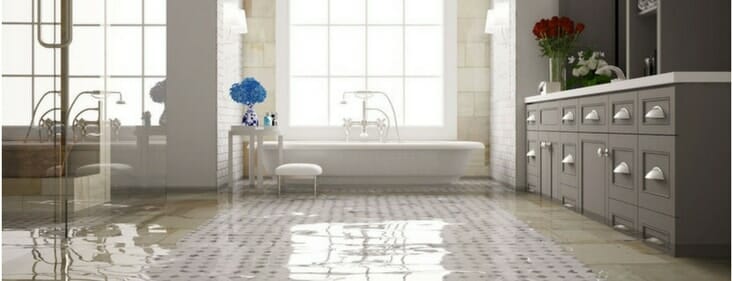The writer is making a few good observations on How to Repair and Prevent Bathroom Water Damage? overall in the article down below.

Water damage typically happens in the bathroom as a result of the water utilized everyday. Sometimes, the damages could be a little mold from the shower. Other times, it's substantial damages on your floor. Whatever it is, it is constantly good to recognize the cause and also avoid it prior to it happens.
This overview will go through several of the common causes of water damage in the bathroom. We will additionally analyze what you can do to prevent these reasons from damaging your shower room. Let's dive in.
5 Typical Causes of Water Damage in Shower Rooms
These are the common reasons you would certainly have water damage in your bathrooms as well as exactly how you can detect them:
Ruptured or Dripping Pipes
There are numerous pipelines carrying water to various parts of your shower room. Some pipelines take water to the commode, the sink, the faucets, the shower, as well as lots of other places. They crisscross the small area of the washroom.
Every now and then, these pipes could obtain rustic and also burst. Various other times, human activity could create them to leak. When this happens, you'll discover water in the corners of your bathroom or on the wall surface.
To spot this, keep an eye out for gurgling walls, molds, or mildew. Call an expert emergency situation plumbing to repair this when it takes place.
Splits in your wall surface floor tilesv
Restroom wall tiles have actually been particularly designed for that objective. They safeguard the wall from moisture from individuals taking showers. Nonetheless, they are not indestructible.
Occasionally, your restroom wall surface floor tiles crack and also permit some wetness to permeate right into the wall. This might potentially ruin the wall if you do not take any kind of action. If you notice a split on your wall tiles, repair it promptly. Don't wait till it destroys your wall surface.
Overflowing bathrooms and also sinks
As people, sometimes we make errors that can cause some water damage in the washroom. For example, leaving your sink tap on can cause overflowing as well as damages to other parts of the restroom with wetness.
Likewise, a damaged commode could cause overflowing. As an example, a busted commode manage or other parts of the cistern. When this takes place, it might harm the flooring.
As soon as you notice an overflowing sink or bathroom, call a plumber to help manage it quickly.
Roof covering Leaks
Sometimes, the issue of water damage to the restroom could not originate from the washroom. For example, a roof leak can trigger damage to the shower room ceiling. You can spot the damages done by looking at the water discolorations on the ceiling.
If you locate water spots on your ceiling, check the roof to see if it's harmed. Then, call a professional to aid resolve the issue.
Excess Dampness
It's great to have that lengthy shower as well as dash water while you dance around and also act like you're executing, but occasionally these acts could cause water damage to your shower room.
Splashing water around can trigger water to head to edges and develop mold and mildews. Watch just how you spread out excess moisture around, as well as when you do it, clean it up to avoid damage.
Verdict
Water damage to your shower room can be aggravating. Nevertheless, you can handle it if you prevent a few of the causes discussed in this overview. Call an expert emergency plumbing professional if you notice any type of severe damages.
How to Repair a Water-Damaged Wall in the Bathroom
All you need to know to repair bathroom wall water damage – from identifying the water source to finishing the repair professionally. If you don’t act quickly to resolve a water damage problem, you could find that it develops into a mold issue and/or cause structural damage to your home. Follow this guide to repair your bathroom before it's too late.
All you need to know to repair bathroom wall water damage
Water damage is a common household problem, and one that, if left unrepaired, can quickly lead to structural problems and health issues. The two most likely rooms where water damage may occur is the bathroom and the kitchen – where water is used often and there is high humidity.
What is water damage?
It is easy to think of water damage as caused by a flood or leaking tap or burst water pipe. However, when water damage is assessed, there are three main categories into which water falls (as classified by the American National Standards Institute). These categories are defined as:
Category 1 Water – ‘Clear Water’
This is sanitary water. There is usually no major threat to health by washing with this water, drinking it, or inhaling if it is streaming. Most water that enters your home will be category 1 water, while most water leaving your home will be either category 2 or 3 water. It may also come from melting snow, rainwater and water tanks.
Damage caused by this type of water can usually be repaired or restored, though this doesn’t mean that there are no potential health issues.
Category 2 Water – ‘Grey Water’
This is contaminated water – sometimes considerably so – and will cause illness if consumed or if it comes into contact with your skin. Water damage in this category is often caused by overflows from toilet bowls, and damage to washing machines and dishwashers. While damaged items might still be repaired or restored after damage by grey water, it is more difficult and more expensive to do so.
If the water damage in your home has been caused by grey water, it is advisable to have repairs made by professionals.
Over time, grey water will deteriorate and become black water.
Category 3 Water – ‘Black Water’
Category 3 water, also known as black water, is highly contaminated and a great risk to health. This may contain raw sewage, heavy metals, and other toxic substances. It will smell terrible.
If this is the water that has caused damage in your bathroom, do not touch it. Stop the water flowing if possible, seal the room and call the experts: it really isn’t worth the risk of ill health and disease that could be fatal. It is very unlikely that items can be repaired or restored if they have been damaged by black water.
https://www.porterscleaning.com/blog/how-to-repair-a-water-damaged-wall-in-the-bathroom/

How to Repair a Water-Damaged Wall in the Bathroom
All you need to know to repair bathroom wall water damage – from identifying the water source to finishing the repair professionally. If you don’t act quickly to resolve a water damage problem, you could find that it develops into a mold issue and/or cause structural damage to your home. Follow this guide to repair your bathroom before it's too late.
All you need to know to repair bathroom wall water damage
Water damage is a common household problem, and one that, if left unrepaired, can quickly lead to structural problems and health issues. The two most likely rooms where water damage may occur is the bathroom and the kitchen – where water is used often and there is high humidity.
What is water damage?
It is easy to think of water damage as caused by a flood or leaking tap or burst water pipe. However, when water damage is assessed, there are three main categories into which water falls (as classified by the American National Standards Institute). These categories are defined as:
Category 1 Water – ‘Clear Water’
This is sanitary water. There is usually no major threat to health by washing with this water, drinking it, or inhaling if it is streaming. Most water that enters your home will be category 1 water, while most water leaving your home will be either category 2 or 3 water. It may also come from melting snow, rainwater and water tanks.
Damage caused by this type of water can usually be repaired or restored, though this doesn’t mean that there are no potential health issues.
Category 2 Water – ‘Grey Water’
This is contaminated water – sometimes considerably so – and will cause illness if consumed or if it comes into contact with your skin. Water damage in this category is often caused by overflows from toilet bowls, and damage to washing machines and dishwashers. While damaged items might still be repaired or restored after damage by grey water, it is more difficult and more expensive to do so.
If the water damage in your home has been caused by grey water, it is advisable to have repairs made by professionals.
Over time, grey water will deteriorate and become black water.
Category 3 Water – ‘Black Water’
Category 3 water, also known as black water, is highly contaminated and a great risk to health. This may contain raw sewage, heavy metals, and other toxic substances. It will smell terrible.
If this is the water that has caused damage in your bathroom, do not touch it. Stop the water flowing if possible, seal the room and call the experts: it really isn’t worth the risk of ill health and disease that could be fatal. It is very unlikely that items can be repaired or restored if they have been damaged by black water.
https://www.porterscleaning.com/blog/how-to-repair-a-water-damaged-wall-in-the-bathroom/
I hope you enjoyed our article about How to Repair and Prevent Bathroom Water Damage?. Thanks a lot for taking a few minutes to read through our piece of content. Do you know about another person who is curious about the subject? Feel free to promote it. Thank you for your time. Kindly come visit our blog back soon.
24-hour help? Dial!